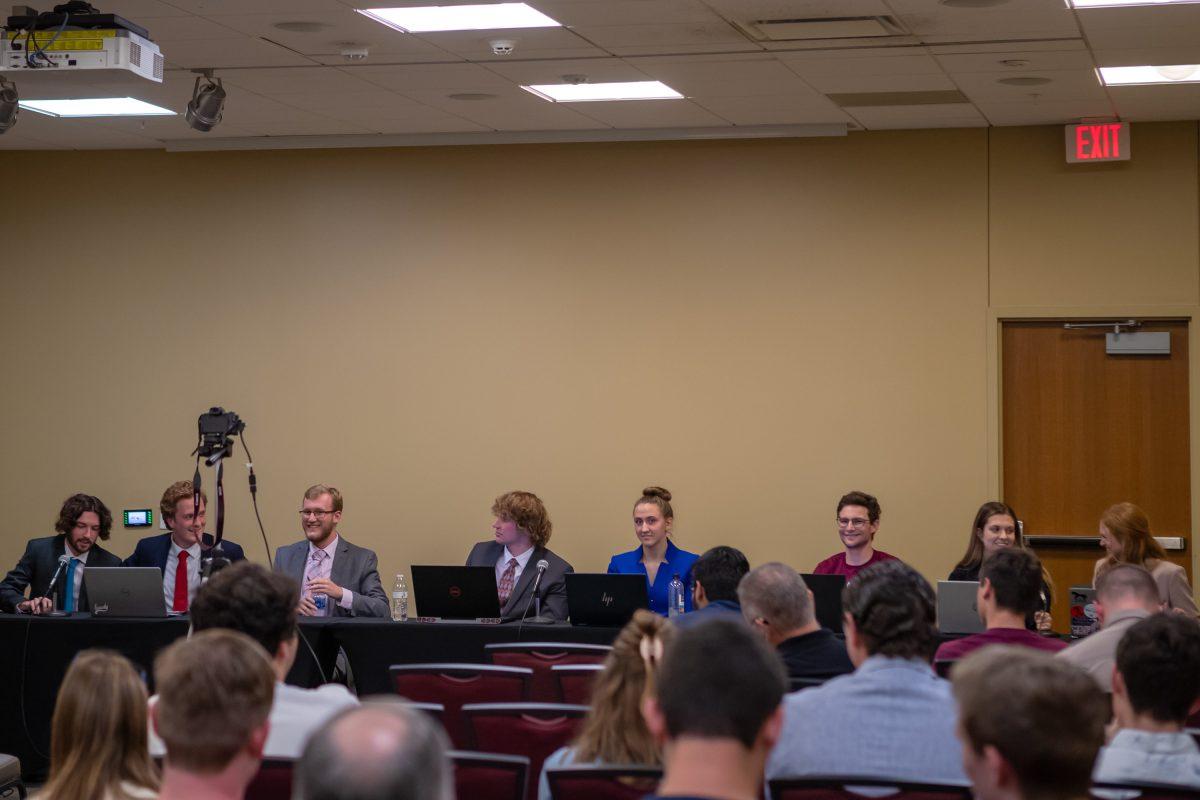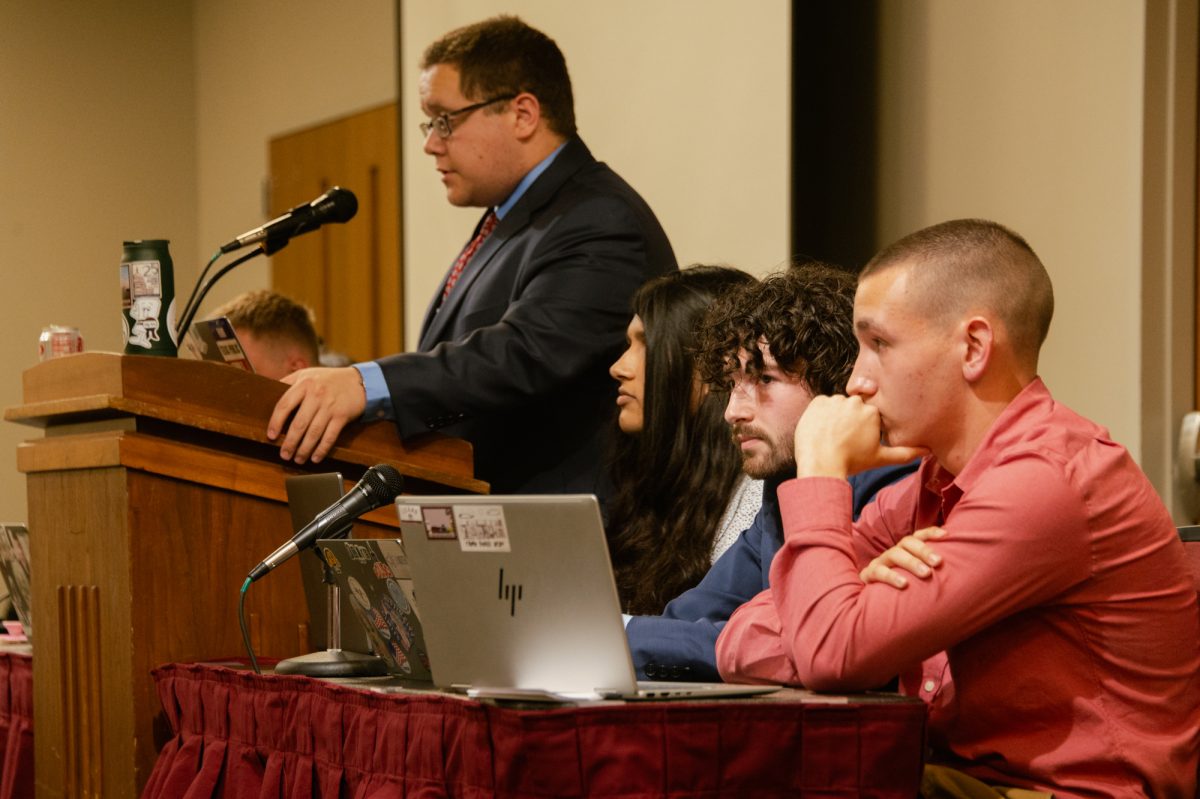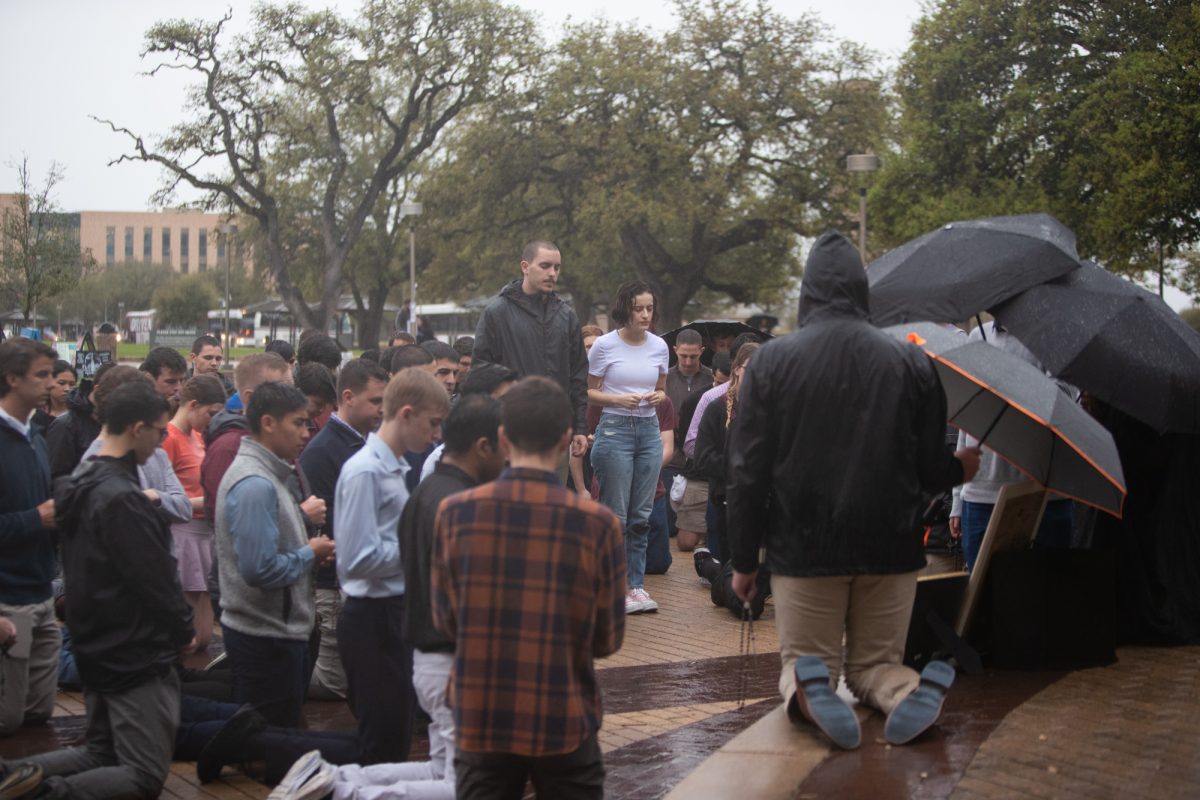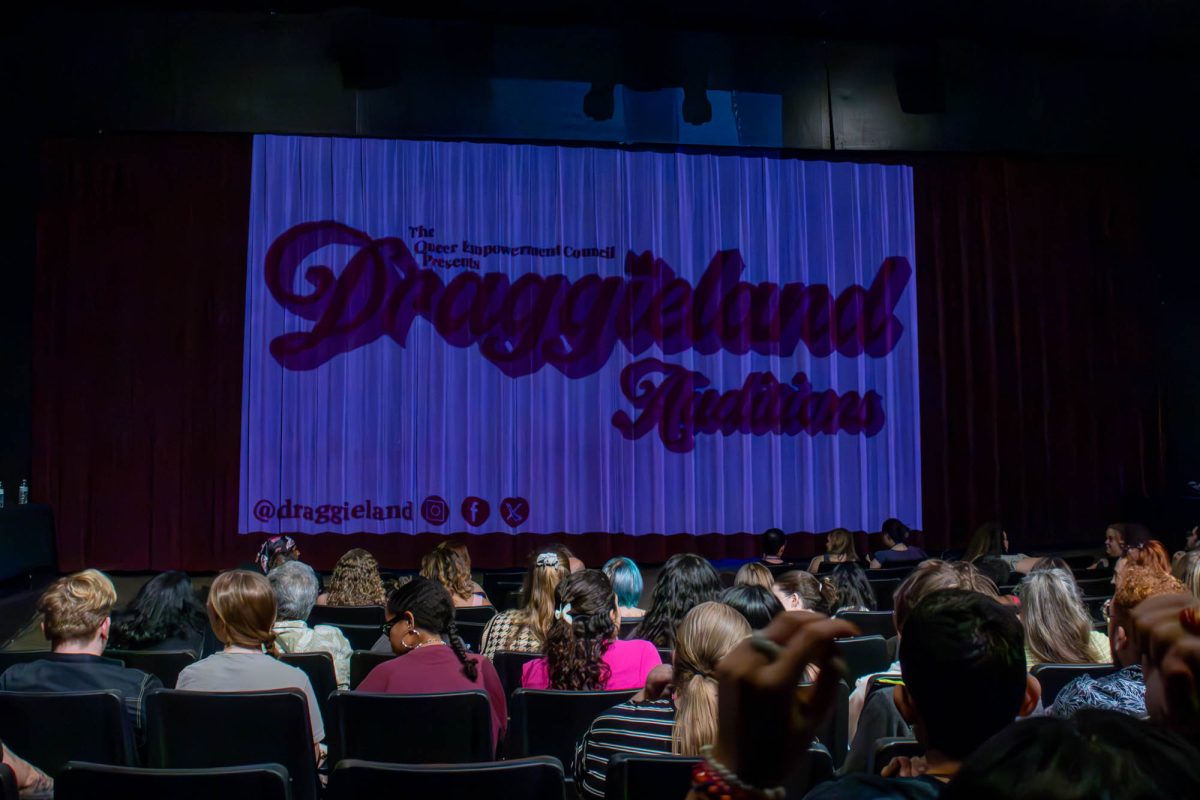Texas A&M students and faculty assembled in a conference room on the second floor of the Memorial Student Center Thursday evening to watch student organizations from both sides of the political aisle debate the topic of “racism in America.”
The April 27 hour-long debate, hosted and moderated by Texas A&M Moderates, was between the Texas Aggie Democrats and the Texas A&M Young Americans for Freedom, or YAF, chapter. The debate was organized with the two moderators in the middle of a long table with three Texas Aggie Democrats on their right and three YAF representatives on their left. The moderators asked topic questions and alternated back and forth between each side as to who answered first. Rebuttals and follow-up questions were permitted from both sides until either the moderators decided to move on, or if the discussion diverged too far from the topic question.
The YAF was represented by campus outreach director elect and multidisciplinary engineering technology sophomore Carson Bethell, YAF president and economics senior Rachel Sweeney, and current campus outreach director and animal science junior Reagan Hoelscher.
Texas Aggie Democrats was represented by programs manager and history and political science freshman Zach Spanhak, Texas Aggie Democrats member and general engineering freshman Barrett Brown, and acting president and sophomore nuclear engineer Kevin Pierce.
The moderators from Texas A&M Moderates were treasurer and supply chain management senior Bryce Robinson and president and economic sophomore Natasha Sarem.
The first topic question, directed towards Texas Aggie Democrats, was whether or not systemic racism was still present in the U.S.
Spanhak said the symptoms of systemic racial disparities in the U.S. can be seen in how different sections of the population fare economically worse than whites.
“Yes, we believe racism in America is systemic in nature,” Spanhak said. “If you look at the disparities between minority groups, especially Black Americans, Native Americans and Hispanic Americans, and things like the unemployment rate and the poverty rate … there has to be some explanatory variable for why they often have rates much lower than white Americans.”
Before the YAF’s rebuttal, Spanhak was asked if he could point out some specific sources of American racial inequality, to which Spanhak said examples goes beyond just slavery.
“Even after the passage of the 13th Amendment and the end of the Civil War, there were still instances of chattel slavery occurring in the United States,” Spanhak said. “Beyond that, of course, we have Jim Crow Laws … disparities in voting rights … redlining … gerrymandering … [and] there’s plenty of different systems like that that continue to cause disparities.”
YAF’s Hoelscher began her rebuttal by saying she agreed the U.S. government has created institutions that continue to hold Americans down, but the modern issues mainly come down to the nuclear family unit.
“That’s what holds America together,” Hoelscher said. “I think that the government has continued to break apart these minority families. And that’s where we see a lot of these issues. They don’t have the family structure to support them to go to college or to do amazing things in their lives.”
Government subsidies for single parents are one reason Hoelscher said families are no longer staying together.
“There are many people that use that money not to help their family,” Hoelscher said. “So, we need to focus on incentivizing strong family units, and that will help ease racism, tensions in America.”
The second topic question, directed first to YAF, asked whether each side thought racism was on the rise in the U.S.
While YAF did say they believe racism is rising, Sweeney said part of the rise was against white Americans.
“There was a YouTube video by a place called CUT that asked Black people, ‘What are whites superior at?’ and they answered things like violence, oppression, stealing, not being able to cook and these other derogatory claims,” Sweeney said. “So, we think that there has been an increase in racism, but it’s been against groups that are overrepresented.”
In response, Spanhak said it is hard to gauge racism against whites when the definition of what counts as white has changed during America’s history.
“For a long time, you saw groups like Irish people, and I think even Catholics to an extent, were considered not white because they were just at a time being discriminated against,” Spanhak said. “So, from the way I look at race, especially, the idea of being white … using terms like that are simply ways to distinguish between who is currently being oppressed and who isn’t.”
The third topic of the night was diversity, equity and inclusion, or DEI, policies that institutions put in place.
Texas Aggie Democrat Pierce said while important, DEI measures are far from perfect.
“If we really lived in a perfect world where everyone was equal from the start … then we wouldn’t need a lot of these things, right?” Pierce said. “As we can see in the society today, median incomes of all demographics in America are very different and people do not start in the same place … until we get a lot of these problems under control … then these requirements are necessary, and they need to be there.”
In response, YAF’s Hoelscher said school choice was the answer to better education for all, not DEI.
“These children in these low socioeconomic areas are being kept in schools that do not have the proper funding,” Hoelscher said. “If we allow them to have some say in their education, they can choose to find a school that most suits them.”
The fourth topic discussed whether access to the internet has promoted racist rhetoric and ideas among young white men.
YAF’s Bethell said he did not think the internet was promoting casual racism, but rather that one’s community should come together to stop any racist comments.
“Do I think any person believes anything that they hear anyone else say as a joke or in some cases mean anything they’re actually saying? I doubt it,” Bethell said. “But, if you have a friend who is saying things that are racist … I think it should be addressed, even if it is a joke.”
In response, Spanhak said if the best ideas — a non-racist society being one of them — always eventually won out over the bad ones, then racism would have already been solved.
“It’s pretty much been something that’s been around for most of human history,” Spanhak said. “That’s just an unfortunate reality. And I think at some point just trying to attempt to let the culture get rid of it, I don’t think that will work.”
The final topic of discussion involved each side providing their take on the “13/50 statistic.” A commonly spread, outdated and misinterpreted FBI statistic, according to the Pew Research Center, which claims that 50% of crime is committed by Black men who make up only 13% of the population.
Texas Aggie Democrat Brown said the numbers are completely misleading and do not truly reflect the reality of the issue.
“So when I went and crunched the numbers myself, I found that if you include all crime … it was closer to 17% of known crimes,” Brown said. “I think that’s a pretty big disparity between the 50% and 17%.”
The real answer, according to Hoelscher, is not about race or statistics but about lowering crime in general by lowering the divorce rate in the U.S.
“If you live in a single mom household you are significantly more likely to end up being arrested at some point,” Hoelscher said. “You know, women are a little bit more emotional, of course, because of all of our hormones and whatnot, but dads that are single parents do not create the same criminal output.”
Hoelscher went on to say the solution would be to not incentivize single motherhood, but Spanhak rebutted by saying that welfare is there as a safety net.
“I think the reason that’s there is because you would only have a single parent … say you have half as much income as a two-parent household,” Spanhak said. “So I think that would be the reason that’s in place right?”
In response, however, Sweeney said the answer to ending single motherhood was simple.
“Remove no-fault divorce and get rid of the hookup culture that we have parading about our society,” Sweeney said.
“In addition to incentivizing staying married and having more kids,” Hoelscher added.
The entire debate can be watched on Youtube.










